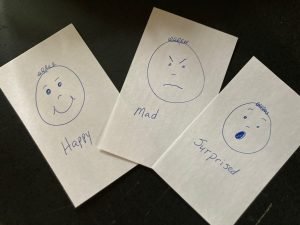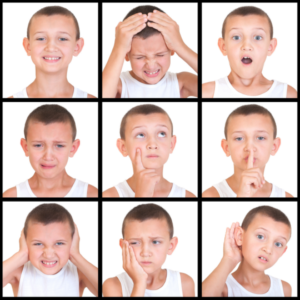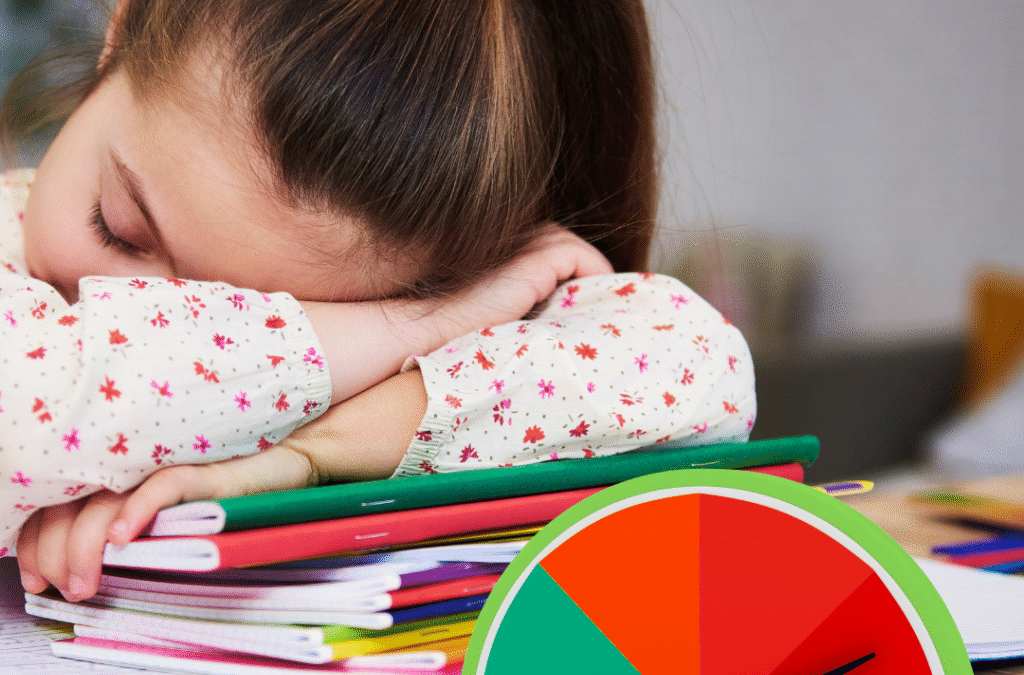Homeschooling your autistic child can mean you need to teach things that are not in the typical school curriculum. Autistic children often struggle with recognizing facial expressions and body language. You can help your child by playing games with them where you practice these skills. It isn’t that an autistic child isn’t capable of recognizing what a facial expression means, but that they usually need to be explicitly taught what to look for.
In the same way that you taught your child to look for 3 sides of a triangle and 4 sides of a square, they can learn to look for clues on faces. While a typical child may naturally pick up on these cues, an autistic child needs practice.
Practice First
 One easy way to practice facial expression reading with your child is to make faces together. Say a feeling, like happy, sad, angry, surprised, or scared. Then make a face that goes with the feeling. Have your child make a face that goes with that feeling as well.
One easy way to practice facial expression reading with your child is to make faces together. Say a feeling, like happy, sad, angry, surprised, or scared. Then make a face that goes with the feeling. Have your child make a face that goes with that feeling as well.
Ask them to look at your face and look for clues to what you are feeling. What shape does your mouth make? Smiles usually mean happiness, but frowns can mean many things. Point out what your eyebrows do when you are angry. Do they scrunch up or come down? What about when you are sad? When we are surprised, our eyebrows go up, and we often open our mouths.
Play in front of a mirror, so your child can see their own face and yours. Encourage your child to change their expression if they make a face that doesn’t match the feeling they are trying to convey. For some children, this may be tricky. However, it can help them improve their own communication skills and understanding of facial expressions.
Make it a Game
 Next, play a game where you and your child sit facing each other. Take turns making a facial expression and guessing what the other person is expressing.
Next, play a game where you and your child sit facing each other. Take turns making a facial expression and guessing what the other person is expressing.
You may wish to create cards to use for this game. For each card, you can write on it a feeling and draw a simple face as an example or reminder. Take turns drawing cards and trying to get the other person to guess what your card says.
Remember to keep the emotions simple if your child struggles with this skill. As they get better at playing, you may want to add more complex expressions like thoughtful, fearful, flirty, or annoyed.
Understand Your Feelings
If your child has trouble identifying emotions, take time to explain them. It doesn’t do any good to recognize that a person’s face says they have a particular feeling if your child doesn’t understand what that feeling is like. Here are some examples to discuss.
- “Cookies make me happy.”
- “I feel confused when I can’t find my keys.”
- “I felt mad when the dog ate my shoe.”
- “I felt sad when we couldn’t see our friends last week.”
- “I was surprised when you brought me a flower from the yard.”
Be specific
 Practice making faces that go with these feelings and sentences. Use specific examples from your life so your child will understand. If you know of a time they felt sad, fearful, or happy, use those stories, too. Remember to keep the emotions and stories for why you feel them simple. Emotions can be complex and, as adults, we understand feelings that are ‘bittersweet” or “happy tears.”. However, it is important to recognize and respond to simple emotions first.
Practice making faces that go with these feelings and sentences. Use specific examples from your life so your child will understand. If you know of a time they felt sad, fearful, or happy, use those stories, too. Remember to keep the emotions and stories for why you feel them simple. Emotions can be complex and, as adults, we understand feelings that are ‘bittersweet” or “happy tears.”. However, it is important to recognize and respond to simple emotions first.
Always remember to start from a place your child will understand and go slowly. Take your time. You can play this game for just a few minutes a day or each week, to help your child grow in their understanding. Once they are a master of recognizing simple feelings you can add in body language like head tilts for confusion or rolling the eyes for annoyance.
Working with your autistic child can be unique, but make it fun, and enjoy your time together!





0 Comments